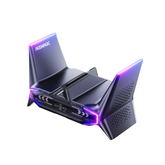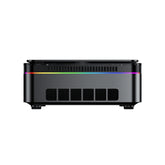HDMI 2.0 vs 2.1: Choose the Best for Your Audio-Visual Needs

HDMI (High-Definition Multimedia Interface) has become the standard interface for connecting various audio and video devices. With the advancement of technology, the HDMI standards have continuously evolved to meet the demands for higher resolutions and more advanced features. This article will delve into the differences between HDMI 2.0 and 2.1, helping you determine which version best suits your needs.
What is HDMI 2.0?
HDMI 2.0 was officially launched in 2013 and represented a significant upgrade from the HDMI 1.4 version. The maximum bandwidth was increased to 18Gbps, nearly doubling the previous 10.2Gbps. This enhancement allows for the transmission of higher resolution and refresh rate content; it also supports up to 32 audio channels, a substantial improvement over the previous 8 channels, providing a richer and more immersive audio experience. This upgrade meets the demands of the 4K Ultra HD era for audio and video transmission.

Supported Resolutions and Refresh Rates
- 4K@60Hz: HDMI 2.0 supports 4K resolution (3840×2160) at a 60Hz refresh rate. This means that the screen can refresh 60 times per second, delivering smoother and clearer visuals, especially noticeable when viewing fast-moving images.
- Color Depth and Gamut: With support for up to 12-bit color depth, color transitions are smoother, and details are more vibrant. Additionally, it supports a broader color gamut, enabling displays to present more vivid and life-like colors, enhancing the realism and immersive nature of the picture.
Audio Features
- High Sampling Rates: HDMI 2.0 supports audio sampling rates up to 1536kHz, which facilitates high-resolution audio. Higher sampling rates mean more accurate sound detail reproduction, offering a cleaner and more precise audio experience.
- Multiple Audio Streams: It can transmit multiple audio streams to different users simultaneously. This function enhances flexibility and usability in multi-zone audio systems, accommodating various audio needs in different areas and for different users.
What is HDMI 2.1?
HDMI 2.1 is the latest version of the High-Definition Multimedia Interface standard, released in 2017. It significantly boosts the maximum transmission speed of HDMI to 48Gbps, allowing for the transmission of high-resolution multimedia content at up to 10K at 120Hz.

Increased Bandwidth and Performance
- 8K and 10K Resolution: Thanks to increased bandwidth, HDMI 2.1 can support resolutions up to 10K@120Hz. This means that in the future, we’ll be able to experience ultra-high-definition images at home that cater to the needs of professional displays and high-end home entertainment systems.
- Dynamic HDR Support: HDMI 2.1 introduces Dynamic HDR, which allows brightness, contrast, and color to be adjusted dynamically based on each scene or even frame by frame. Compared to static HDR, dynamic HDR provides more precise image optimization, displaying richer details and more realistic colors.
Advanced Audio and Video Features
Gaming Features Optimization
- Variable Refresh Rate (VRR) : VRR technology allows the display's refresh rate to synchronize with the frame rate of the graphics processor, reducing screen tearing and stuttering, thus providing a smoother gaming experience. This is especially crucial for fast-paced, high-action games.
- Auto Low Latency Mode (ALLM) : ALLM enables source and display devices to automatically switch to a low latency mode, reducing input lag and enhancing response timing, allowing for more immediate and precise game controls.
- Quick Frame Transport (QFT) : QFT reduces latency in the frame transmission process, enhancing real-time interactive experiences. This is particularly beneficial for applications requiring rapid response, such as virtual reality (VR), augmented reality (AR), and online gaming.
Enhanced Audio Return Channel (eARC)
- Support for Uncompressed and Advanced Audio Formats: eARC is an upgrade from the traditional ARC, offering higher audio bandwidth to support uncompressed 5.1 and 7.1 channel audio, as well as advanced, object-based audio formats like Dolby Atmos and DTS:X. This enables users to enjoy a more immersive audio experience.
- Increased Audio Bandwidth and Quality: The higher bandwidth provided by eARC ensures the transmission of high-quality audio signals, preventing sound quality loss due to compression and delivering a cinema-quality sound experience at home.
HDMI 2.0 vs. HDMI 2.1: Detailed Comparison

When selecting a High-Definition Multimedia Interface (HDMI), understanding the differences between HDMI 2.0 and HDMI 2.1 is crucial. Here is a detailed comparison of the two standards across several key aspects to help you make an informed decision.
Difference 1: Bandwidth Variation
- HDMI 2.0: Maximum bandwidth of 18Gbps.
- HDMI 2.1: Maximum bandwidth increases to 48Gbps, almost triple, supporting higher data transmission needs.
Higher bandwidth means HDMI 2.1 can handle larger data loads, supporting higher resolutions, refresh rates, and richer color information. This is essential for devices that require the transmission of high-quality video and audio.
Difference 2: Resolution and Refresh Rate Support
| Resolution and Refresh Rate | HDMI 2.0 | HDMI 2.1 |
|---|---|---|
| 4K | Up to 4K@60Hz | Up to 4K@120Hz |
| 8K | Not supported | Up to 8K@60Hz, 8K@120Hz |
| 10K | Not supported | Supports 10K@100Hz/120Hz |
- HDMI 2.0: Supports up to 60Hz refresh rate at 4K resolution, which may not be ideal for ultra-fast motion.
- HDMI 2.1: Supports higher resolutions like 8K and 10K, with refresh rates up to 120Hz. This is a significant enhancement for users seeking ultra-high-definition image quality and smooth visual experiences.
Difference 3: Dynamic HDR and Static HDR
- HDMI 2.0: Supports Static HDR (e.g., HDR10), using fixed metadata throughout content playback, without adjustment for scene changes.
- HDMI 2.1: Supports Dynamic HDR, allowing for dynamic adjustments of brightness, contrast, and color based on the needs of each scene or frame, offering more precise and vivid image quality.
Dynamic HDR provides better visual effects, showcasing richer details and more realistic colors, significantly enhancing the viewing experience.
Difference 4: Gaming Experience—VRR, ALLM, QFT
- HDMI 2.0: Does not support these advanced gaming features.
-
HDMI 2.1:
- Variable Refresh Rate (VRR) : Synchronizes the refresh rate of the GPU and display to eliminate tearing and stuttering, delivering a smoother gaming experience.
- Auto Low Latency Mode (ALLM) : Automatically switches to low latency mode when a game signal is detected, reducing input delay and enhancing game response time.
- Quick Frame Transport (QFT) : Reduces frame transmission delay, improving real-time interactivity, especially suitable for high-response applications like gaming and VR.
For gamers, the features provided by HDMI 2.1 significantly enhance the gaming experience, reducing delays and screen issues, making gameplay smoother and more responsive.
Difference 5: eARC vs. ARC—Audio Return Channel Upgrade
-
HDMI 2.0 (ARC) :
- Limited Bandwidth, supporting only compressed audio formats.
- No Support for advanced uncompressed audio formats, unable to transmit high-quality audio like Dolby TrueHD, DTS-HD Master Audio.
-
HDMI 2.1 (eARC) :
- Substantially Increased Bandwidth, able to transmit uncompressed 5.1 and 7.1 channel audio.
- Supports Advanced Audio Formats like Dolby Atmos and DTS:X, providing an immersive audio experience.
- Better Compatibility, automatically detecting and supporting the optimal audio format, simplifying connectivity setups and enhancing user experience.
The introduction of eARC allows HDMI 2.1 to support higher quality audio transmission, making it significant for building high-end home theaters and for users seeking extraordinary sound effects.
How to Choose the Right HDMI Version for You
When deciding between HDMI 2.0 and HDMI 2.1, the key is understanding your personal needs and future plans. Here are some guidelines to help you make the best choice.
Choosing Based on Device Requirements
-
Current Device Support: First, check the HDMI version supported by your existing devices, such as TVs, monitors, audio systems, and gaming consoles. If your equipment only supports HDMI 2.0, then using HDMI 2.1 cables and devices won't unlock its full capabilities. Conversely, if your devices support HDMI 2.1, selecting cables and accessories to match that specification is wise to fully utilize the advanced features.
-
Feature Needs: Consider your specific audio-visual needs. If you're primarily watching 4K@60Hz video content and don't require advanced gaming features or 8K resolution, then HDMI 2.0 should suffice. However, if you're a gamer eager to experience advanced features like Variable Refresh Rate (VRR) and Auto Low Latency Mode (ALLM) offered by HDMI 2.1, or if you plan to watch content in 8K or 10K resolution, then HDMI 2.1 is the better fit.
Future Planning and Compatibility Considerations
-
Long-Term Perspective: If you plan to upgrade your devices in the coming years or want your new equipment to have a longer lifespan, choosing HDMI 2.1 is a forward-thinking decision. This will ensure that your devices can support higher resolutions and more advanced features that may emerge in the future, reducing the need for frequent equipment replacements.
-
Compatibility: Ensuring compatibility between the HDMI version you choose and your existing devices is crucial. Although HDMI 2.1 is backward compatible with HDMI 2.0, using HDMI 2.1-supported equipment and cables is recommended for optimal performance. Also, pay attention to the quality and specifications of the cables to ensure they can handle the required bandwidth and features.
Frequently Asked Questions(FAQs)
Is HDMI 2.1 needed for 1440p 120Hz?
No, HDMI 2.1 is not necessary for 1440p at 120Hz. HDMI 2.0 can handle 1440p resolution with a refresh rate of 120Hz. However, for those looking to benefit from features like Variable Refresh Rate (VRR) and Auto Low Latency Mode (ALLM) that enhance gaming experiences, HDMI 2.1 is recommended.
Can HDMI 2.0 handle 4K 120Hz?
HDMI 2.0 cannot handle 4K at 120Hz; its maximum capacity is 4K at 60Hz. To achieve 4K at 120Hz, upgrading to HDMI 2.1 is required, which offers the necessary bandwidth to support higher refresh rates at this resolution.
Is HDMI 2.1 mandatory for 4K at 120fps?
Yes, HDMI 2.1 is necessary for 4K at 120fps. HDMI 2.1 provides the bandwidth needed to support the high data rate required for 4K resolution with a refresh rate of 120 frames per second, making it essential for those seeking smoother, high-resolution content playback.
Is HDMI 2.1 better than 2.0 for gaming?
Yes, HDMI 2.1 is superior to HDMI 2.0 for gaming. It supports higher resolutions and refresh rates, and introduces advanced features like Variable Refresh Rate (VRR), Auto Low Latency Mode (ALLM), and Quick Frame Transport (QFT), which collectively enhance the gaming experience by reducing latency and improving graphics smoothness.
Summary
In the comparison of HDMI 2.0 vs HDMI 2.1, HDMI 2.1 clearly offers higher performance and more features. However, whether an upgrade is necessary depends on your specific needs and device situation. For standard 4K viewing and everyday use, HDMI 2.0 is adequate. But if you're a gaming enthusiast, an audio-visual aficionado, or someone who wants to stay on the cutting edge of technology in the coming years, HDMI 2.1 will provide a superior experience.
References and Further Reading
[1] HDMI 2.1b Specification Technology Overview [Cited 2024 December 4] Available at: Link
[2] Features and Specifications of HDMI 2.0 Cables - C2G [Cited 2024 December 4] Available at: Link
[3] HDMI - Wikipedia [Cited 2024 December 4] Available at: Link
[4] HDMI Technology: Specifications and Programs [Cited 2024 December 4] Available at: Link
Related articles
Let's talk about DisplayPort 1.2: everything you need to know.
Difference Between USB A vs USB C & Which One is Better
HDMI 1.4 vs 2.0: What's the Difference and Which One Should You Choose?
HDMI vs. Micro HDMI vs. Mini HDMI: The Ultimate Comparison Guide







Leave a comment
Please note, comments need to be approved before they are published.